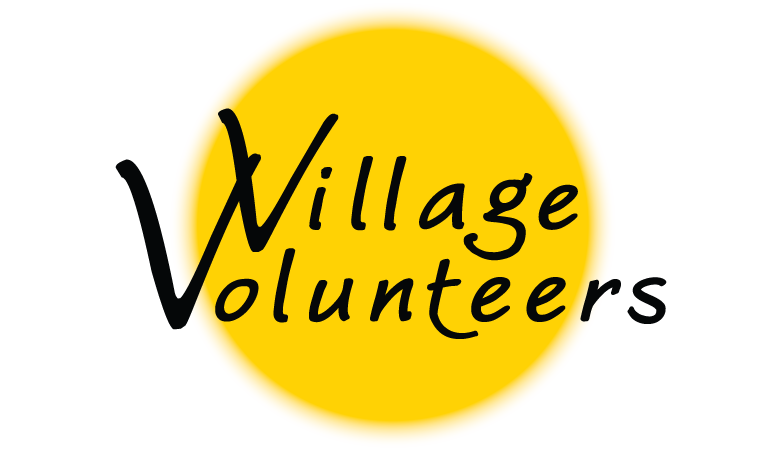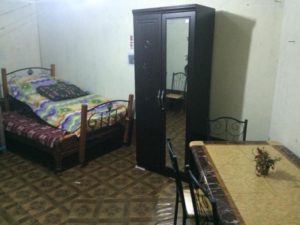Kenya: Kipsaina Crane and Wetland Conservation Group
Volunteer with a conservation program that conserves important wetlands, endangered species, and an important watershed. The Kipsaina Crane and Conservation Group strives to promote and actively participate in a variety of innovative programs for both considering community livelihoods and biodiversity to conserve wildlife and wetlands within and around Saiwa National Park and to protect sites critical wetlands for the persistence of Grey Crowned Cranes.
We love helping volunteers find their perfect placement. Fill out our Interest Form to get started!
Program Overview
Mission:
The Kipsaina Crane and Wetland Conservation Group (KCWCG) was founded in 1990 by local youths who registered as a Community-Based Organization (CBO) to raise awareness among communities in the Trans Nzoia District about the importance of conserving wetlands for both livelihoods and biodiversity, and to protect sites critical for the persistence of Grey Crowned Cranes.
KCWCG works with communities to:
- Prevent drainage of wetlands
- Prevent deforestation
- Prevent overharvesting of wetlands
Realizing that these goals could not be accomplished unless the socio-economic needs of the communities were addressed, KCWCG began to integrate wetland conservation with community development, focusing on problems affecting both wetland health and community well.
KCWCG Goals
- Create Income-generating activities
- Educate you about environment
- Restoration of wetlands vegetation
Accomplishments
- Program is now in six counties in Kenya’s western region
- Restoration of over 1.7 km wetlands along the Kipsaina River
- Creation of environmental education program being taught in 32 schools
- Establishment of tree nurseries, bee keeping, fisheries, organic farming
- Distribution of over 100,000 seedlings to institutions & households
- Recognition from UNEP, UNDP, media coverage by BBC
- Runners up in 2007 Equator Initiative Contest
Volunteer Opportunities
Education: Adult and Child
- Teaching English
- HIV/AIDS Education
- Environmental Education for youth
Agriculture: Sustainable Farming Techniques
- Training, education, and outreach on bio-intensive farming
- Food and Nutrition
- Pest and disease management
- Post harvest handling and marketing
- Soil and water conversation and irrigation
- Seed saving/heirloom seeds
- Farmer-led research
Business: Marketing, Business Development, Leadership Training
- Leadership and business management skills
- Organizational development
- Management principles
- Accounts and financial management; fundraising
- Job searching skills, writing resumes and preparing for interviews
- IT training in Word, Excel, PowerPoint, Publisher, the internet and email
- Systems administration, hardware maintenance, and repair
- Publication and documentation
- Advocacy and policy change in conservation issues
Micro-Finance Development:
- Introduction to business, book keeping, and marketing skill training
- Self-employment skills training and development
- Loans and savings development
Building and Construction:
- Participate in building, construction and landscaping projects
Engineering:
- Irrigation
- Solar Energy
- Infrastructure Development
Public Health:
- HIV/AIDS education
- Public health education
- Medical data collection
- Documentation of individual AIDS patients stories for the Memory Box Project
- Safe water health awareness, production, distribution, and use of ceramic water filters
Women’s Issues and Gender Equality:
Work with women’s groups in the following areas:
- Developing sustainable income-generation projects
- Sustainable farming programs
- Women’s rights, empowerment, and capacity building
Volunteer Accommodations
Volunteers are housed in double-occupancy huts located on the compound grounds. Linens and mosquito nets are provided for each bed. Volunteers bathe from a basin in a shower room and latrines are available for volunteers.
Meals
Meals are prepared by a cook and are eaten at the home of the Director.
Drinking Water
Volunteers are provided with water filters in their huts.
Electricity
There is electricity, however intermittent.
Internet Access
Volunteers can access the internet in Kipsania and Kitale.
Laundry
Laundry can be done by volunteers or can have it done for a small fee. All volunteers are asked to launder their own undergarments.
Meet Maurice Wanjala the Program Director of The Kipsaina Wildlife and Crane Conservation Group. Reflect on your childhood and family.
Maurice reflects on his childhood.
I was born on the 28th of Aug 1958 at Kimini famously known as Elgon Club and was baptized on 29th Sept 1959. During my childhood, I very much interacted with the white settlers and Indian children of whom their parents used to invite me for tours, picnics, and movies. At that time, the environment and nature was intact with a lot of forest cover, wildlife abundance, and consistent and predictable weather. Kitale was the main town where people used to converge for social interactions. I was born in a family of 14; 7 boys and 7girls; four of them are deceased. My father was a tailor and my mum was a teacher at St. Brigid’s’ Kiminini. Eventually, my father was in a bad accident that impacted our family. My mum was the sole breadwinner for our family. Through the economic hardships we went through then, she managed to see everyone through primary and secondary education.
In 1966, I moved to my maternal grandparents home in a rural area in Western Kenya where I started my primary school education. My granddad loved animals and my paternal granddad loved plants so I got an early understanding of the two most important aspects of the environment. While in primary school, I joined the Scouting Club initially as a cub and then later as a scout. I served as patrol leader and ascended to the troop leader position and the school band commander.
In 1969, the government established land settlement schemes from the former white settler’s land and allowed citizens to purchase land from willing sellers. Through this, my parents managed to purchase land upstream Saiwa Swamp National Park. On our settlement, the entire area was covered with a thick forest/riverine forest. The wetland ecosystem was intact fully inhabited by a lot of Sitatungas (antelopes), Crested Cranes, and Debrazza monkeys beside abundant wildlife (fauna and flora). Following the settlement, people started clearing the forest to pave way for agricultural activities and this was the beginning of the major destruction and change.
The challenges Maurice faced growing up and getting an education.
Maurice, as in most areas of poverty, lacked school tuition, a lack of essential educational materials and basic needs like clothing, shoes, and food. The schools lacked infrastructure (classrooms and latrines). As a child, he walked long distances to school and was vulnerable to diseases eg malaria, typhoid, and cholera.
I developed a great passion for nature. Based on my beliefs, we agreed to form a youth group to assist in conserving the environment. We worked hand in hand with the park management and established a tree nursery that raised tree species. This included medicinal trees. We also established a river bank rehabilitation program where we planted fodder crops to assist in safeguarding soil erosion and allowed farmers to harvest and feed their livestock away from the wetlands during the dry season. We managed to provide alternative water sources by digging shallow wells outside the park. We ventured into small livelihood projects to serve as incentives to the community. This included bee keeping etc. and started interacting with relevant government agencies/stakeholders, local and international universities, media houses (BBC), researchers since then we have been considered to be a role model in community crane and wetland conservation.
What were the obstacles in running a conservation program?
Working as a group of different and diverse individuals in community conservation has a lot of challenges such as conflict of interest and high expectations from both the members and the community. The obstacles were clear and how to deal with them was a challenge. There was lack of knowledge of environmental conservation laws and policies; lack of political goodwill; conflicting government policies; economic hardships, overpopulation leading to a scramble for wetland ecosystem; tropical diseases, lack of essential equipment and materials, lack of expertise in environmental related fields.
What are the hopes for the future?
- To scale up and reach out to a wider area
- To see the wetland ecosystems well conserved and intact mainly for the wildlife and wise use of the same for both man and wildlife.
- Establish exchange programs both locally and internationally.
- To scale education on wetland conservation to be entrenched into the school curriculum and community resource centers established.
- Turning well-conserved sites to be turned into eco-tourism sites.
- To have well-trained staff/personnel to handle community conserved areas.
- Communities living around the wetland ecosystem to be provided with alternative livelihoods.
- Provision of alternative clean water
- Institutions becoming more involved especially schools and infrastructure for schools and health centres improved.
- Documentation of all lessons learned and indigenous knowledge from different communities residing in Western Kenya.
How does our community benefit from having volunteers?
For Kipsaina, we would like to have volunteers to exchange knowledge and experience in different fields and students who do research and discovery of a project that will have an impact.

